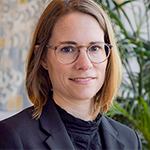Perpetual Grave Peace
Sweden is one of few countries that, according to law, applies perpetual grave peace, but what does it mean in practice? Can a place truly be eternal? Why do we have perpetual grave peace, and how is the concept interpreted and practiced in funeral services, especially concerning the reuse of graves? According to the Swedish Criminal Code, it is a punishable offense to damage or move ashes or remains, including urns and coffins. However, it is entirely possible to reuse (reopen) graves, something that can be problematic for certain religious communities that believe in an afterlife. How grave peace is interpreted and practiced seems to vary among different cemetery administrators. There are no scientific publications on how the concept is applied in Sweden; however, the issue of perpetual grave peace has been relevant in relation to the Estonia disaster and the relocation of the Kiruna cemetery due to expanded mining activities in the area.
Needs analyses from cemetery administrators in metropolitan regions indicate that there will be a shortage of burial spaces, especially coffin burial plots, within a few years. The background to this is urbanization, densification, and the evolution of Sweden into a multicultural society with diverse burial traditions.
The project
In the project, we examine how society can meet the future need for more burial ground space, for example, by reusing existing burial plots. We address questions about perpetual grave peace and how cemeteries can be developed without conflicting with current laws.
The purpose is to investigate and problematize what perpetual grave peace in cemeteries in Sweden entails and has entailed since the mid-1800s. The goal is to spread knowledge about the concept and contribute to national guidelines for the reuse of gravesites, taking into account various religious beliefs. Furthermore, we aim to initiate a political debate on perpetual grave peace in relation to the future need for more burial ground space.
The research questions
- How has the concept of perpetual grave peace developed in laws and regulations in Sweden over the last 150 years?
- How is perpetual grave peace applied and interpreted by cemetery administrators, authorities, and the Swedish Church?
- How can administrators reuse and further develop existing burial sites without conflicting with legal or religious aspects?
- How are historical burial sites, such as hospital cemeteries or burial quarters without active burial rights, managed, and how could they be activated for new burials?
The three phases of the project
- A document study and literature review on perpetual grave peace and perpetual burial rights.
- An interview study among professionals in cemetery management, relevant authorities, and the Swedish Church. This phase also includes a case study in Gothenburg, including on-site visits to a selection of cemeteries, document studies such as meeting minutes and local reports, and a focus group interview with employees in the cemetery administration.
- An implementation and planning phase where the researchers, together with the reference group, organize a themed day on perpetual grave peace targeting cemetery administrators in Sweden. In this phase, discussions also take place on how the project can contribute to national guidelines for the reuse of burial sites.
The research team
The project is led by two senior researchers, with the project leader having extensive national and international experience in research, publishing, and networking within the theme of cemeteries.
The project is carried out in close collaboration with a reference group consisting of key stakeholders in the cemetery industry in the Nordic region, as well as three experienced researchers with diverse disciplinary backgrounds. With this broad engagement in the project, societal relevance is well-grounded, and the results will be communicated both internationally and nationally through publications, presentations, and a themed day.

